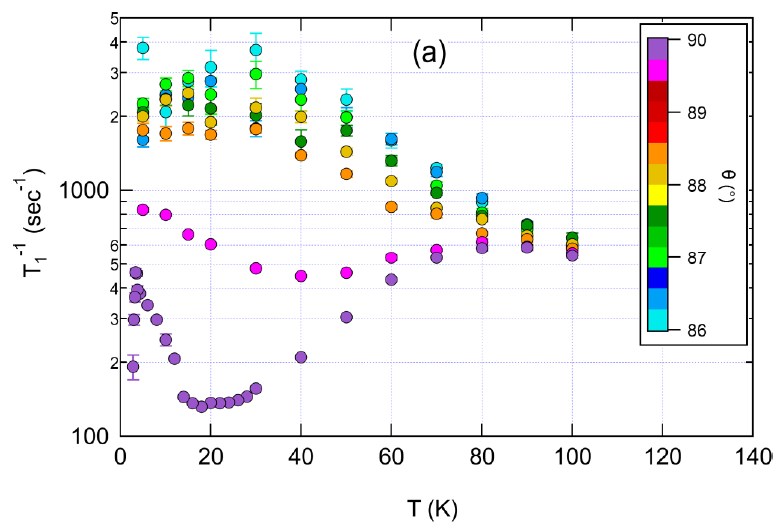Ferroquadrupolar Order and Nematicity
Postdoc Igor Vinograd, graduate students Zhipan Wang, Ziwen Mei, Paulo Menegasso, and REU undergraduate Daphne Garcia recently published their work on NMR studies of TmVO4. Tm is an unusual element – it is one of the rare earths, but in some cases it is non-magnetic. (Technically speaking, it has a non-Kramer’s doublet in this material, which means it to first order it does not couple to magnetic fields.) On the other hand, the Tm 4f electrons do have quadrupolar moments, which couple to the lattice strain. As a result, the electrons and lattice collectively distort in one of two possible directions, just like an Ising ferromagnet. This system thus offers an ideal platform to investigate nematic ordering, in which the electronic degrees of freedom spontaneously break discrete rotational symmetry. Importantly, there are no competing ground states (like superconductivity), unlike other nematic systems such as the iron based superconductors.

